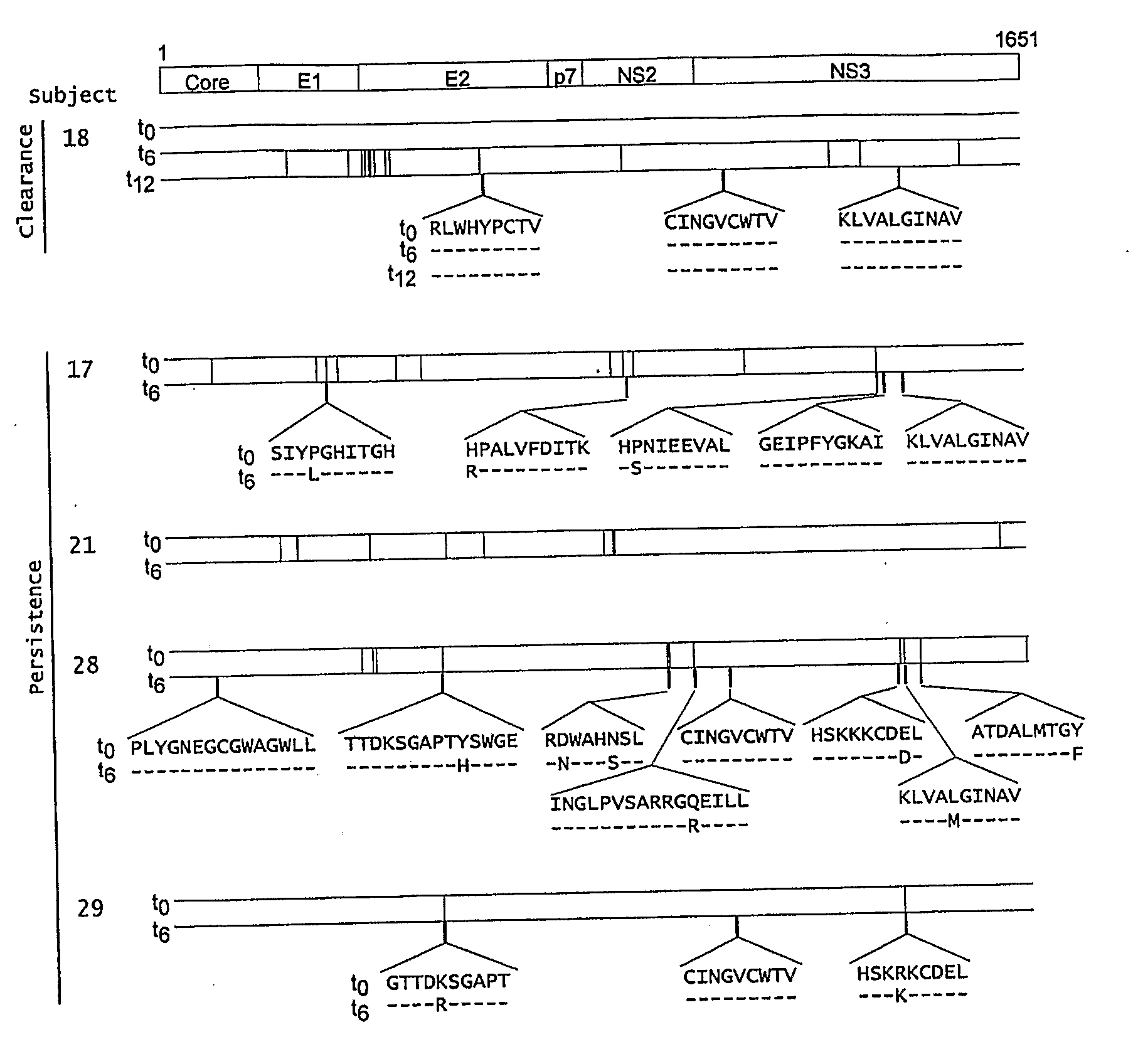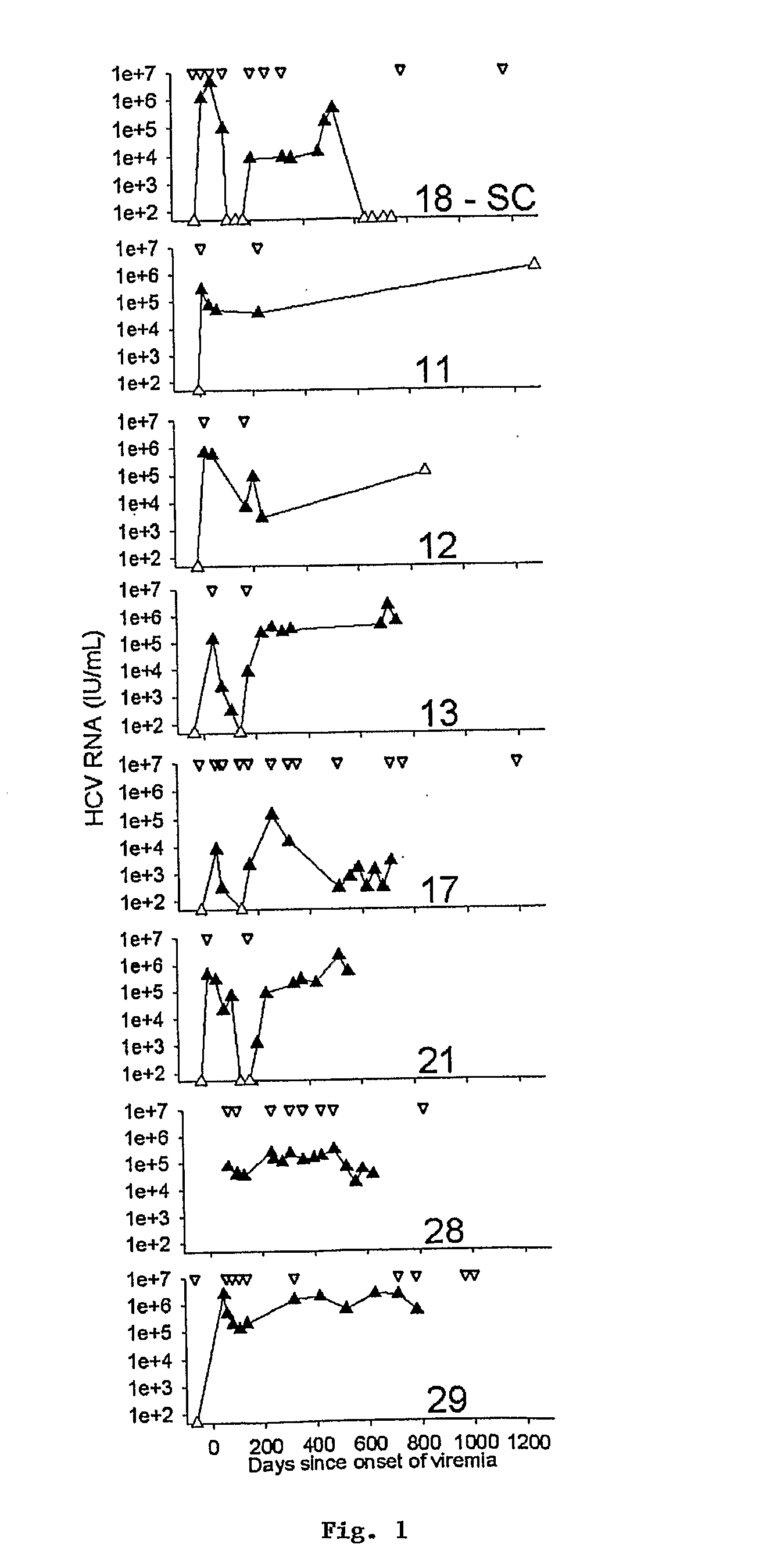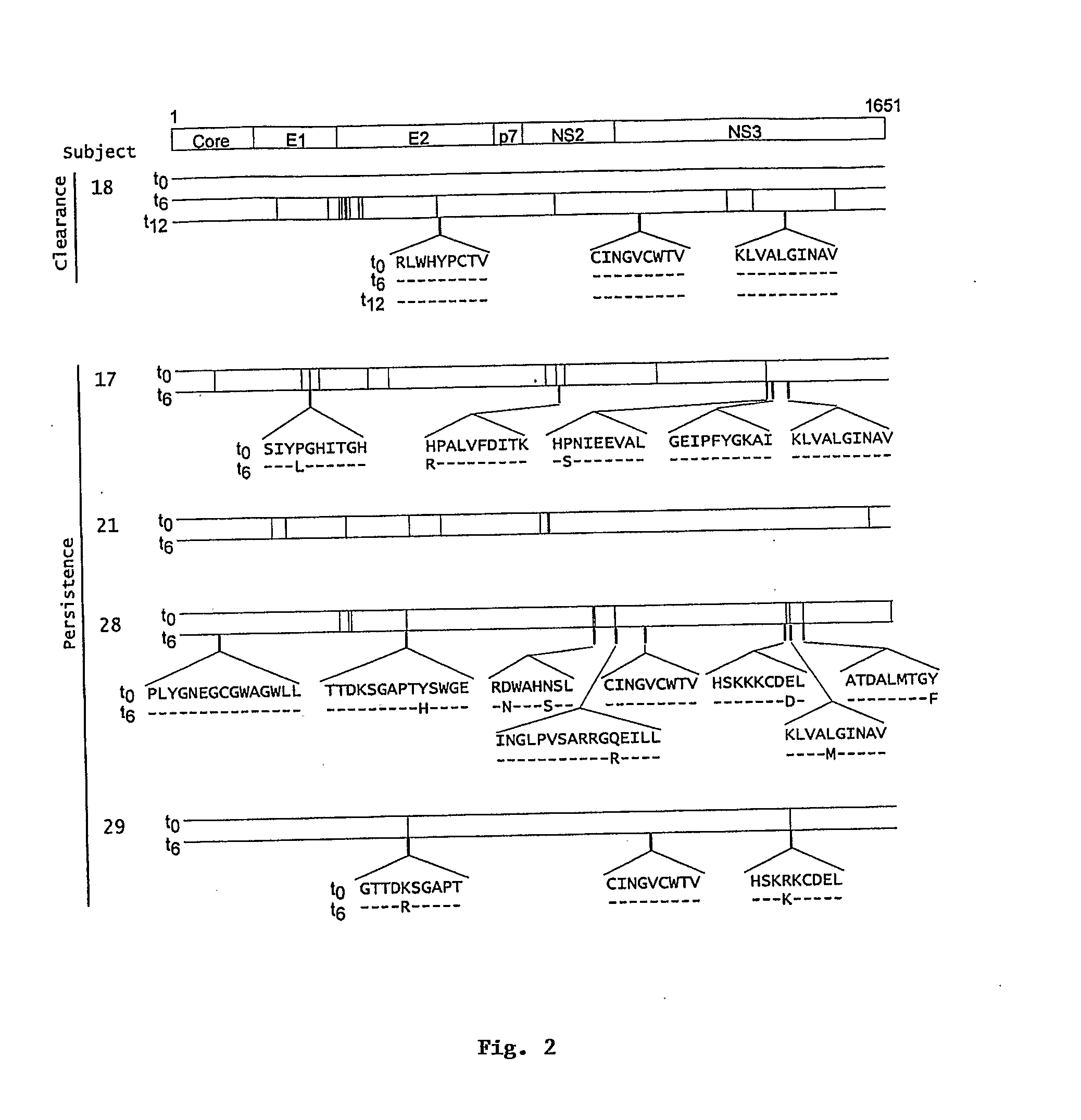Use of consensus sequence as vaccine antigen to enhance recognition of virulent viral variants
a consensus sequence and vaccine antigen technology, applied in the field of consensus sequences for hepatitis c virus, can solve the problems of no known vaccines, many mutations in hcv sequences, and insufficient complexity of cot approach, so as to reduce the probability
- Summary
- Abstract
- Description
- Claims
- Application Information
AI Technical Summary
Benefits of technology
Problems solved by technology
Method used
Image
Examples
example 1
Obtaining HCV Consensus Sequence 1a and 1b
[0139]Using HCV Sequence Database at Los Alamos National Laboratories at the website: http: / / hcv.lanl.gov, all available non-redundant human sequences greater than 500 nucleotides were obtained. Then, the options were set as default except for: “Genotype” was set to “1”, “Subtype” to “a or b”, “Include recombinants” set to “off”, “Include fragments longer than” was set to “on, 500” and “Excude Non-human hosts” was set to “on.” Once the preliminary query result was displayed, “Exclude related” was chosen. Then the sequences were downloaded with default options. The rationale behind these series of steps is that size restriction reduces the number of unidirectional (poor quality) sequences.
[0140]Next, the alignments were neatened by performing any number of commands, such as restoring codon boundaries, closing gaps and removing non-translated termini. The rationale behind this step is that only the primary open reading frame is desired. Next, ...
example 2
Cellular Immune Selection with Hepatitis C Persistence in Humans
[0142]Hepatitis C virus (HCV) infection frequently persists despite substantial virus-specific cellular immune responses. To determine if immunologically-driven sequence variation occurs with HCV persistence, we coordinately analyzed sequence evolution and CD8+ T cell responses to epitopes covering the entire HCV polyprotein in subjects followed prospectively from prior to infection to beyond the first year. There were no substitutions in T-cell epitopes for a year following infection in a subject who cleared viremia. In contrast, in subjects with persistent viremia and detectable T cell responses, we observed substitutions in 69% of T cell epitopes, and every subject had a substitution in at least one epitope. In addition, amino acid substitutions occurred 13-fold more often within than outside T cell epitopes (p<0.001, range 5-38). T lymphocyte recognition of eight of ten mutant peptides was markedly reduced compared ...
example 3
Divergent and Convergent Evolution Following a Common-Source Outbreak of Hepatitis C
[0235]The genomic sequences of viruses that are highly mutable and cause chronic infection tend to diverge over time. We report that these changes represent both immune driven selection and, in the absence of immune pressure, reversion toward a more “fit” ancestral consensus. Sequence changes in hepatitis C virus (HCV) structural and nonstructural genes were studied in a cohort of women accidentally infected with HCV in a rare common-source outbreak. We compared sequences present in serum obtained 18-22 years after infection to sequences present in the shared inoculum and found that HCV had evolved along a distinct path in each woman. Amino acid substitutions in known epitopes were directed away from consensus in persons having the HLA allele associated with that epitope (immune selection), and toward consensus in those lacking the allele (reversion). Vaccines for genetically-diverse viruses may be m...
PUM
| Property | Measurement | Unit |
|---|---|---|
| Fraction | aaaaa | aaaaa |
| Fraction | aaaaa | aaaaa |
| Fraction | aaaaa | aaaaa |
Abstract
Description
Claims
Application Information
 Login to View More
Login to View More - R&D
- Intellectual Property
- Life Sciences
- Materials
- Tech Scout
- Unparalleled Data Quality
- Higher Quality Content
- 60% Fewer Hallucinations
Browse by: Latest US Patents, China's latest patents, Technical Efficacy Thesaurus, Application Domain, Technology Topic, Popular Technical Reports.
© 2025 PatSnap. All rights reserved.Legal|Privacy policy|Modern Slavery Act Transparency Statement|Sitemap|About US| Contact US: help@patsnap.com



